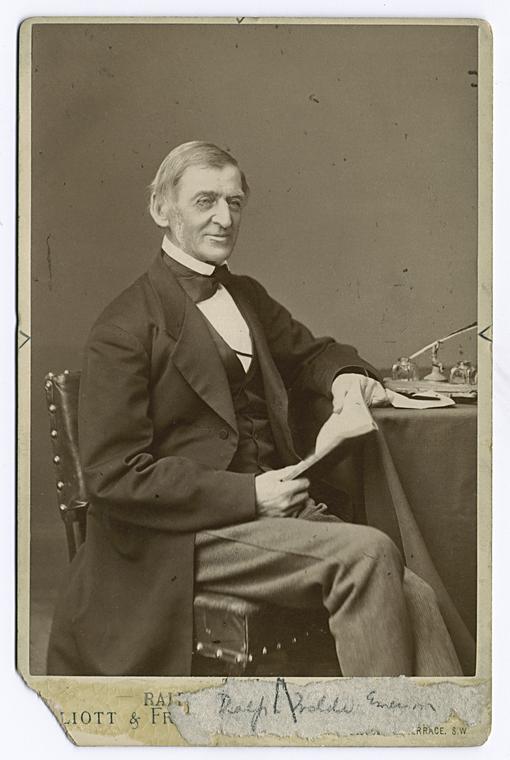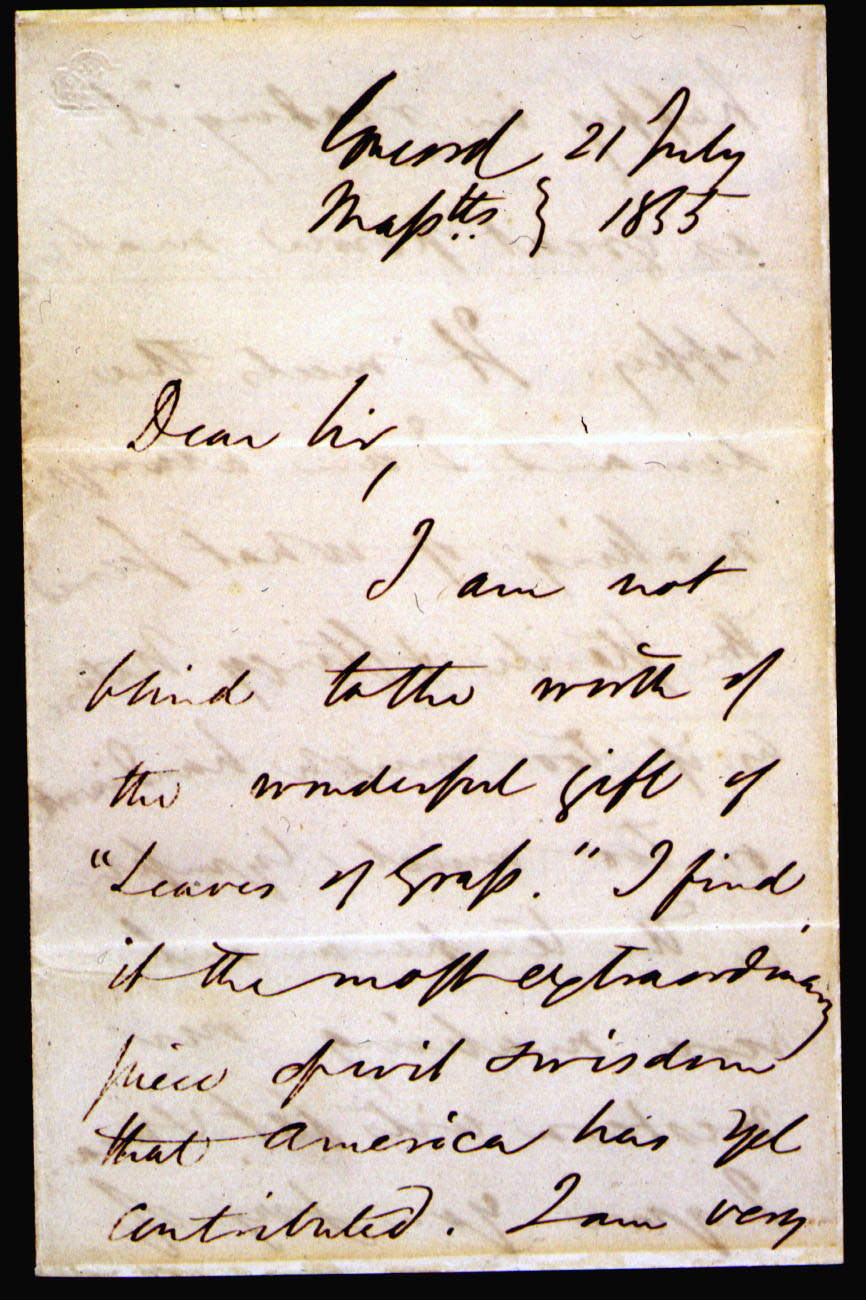
Source: Sextant et compas, Fanny Shertzer, Wikimedia
What is syntax? Think of it as the way an author chooses to join words into phrases, clauses, and sentences. Syntax is similar to diction; the difference is that syntax deals with how a writer organizes and structures groups of words, while diction refers to the individual word choices a writer makes. Looking closely at how writers use of syntax and figurative language will show you how they make their work more engaging.
As you read increasingly difficult texts, it’s important for you to be able to recognize what a writer’s intentions are and what impact the writing is supposed to have on you as a reader. The more you understand about the intent of piece of writing, the more fun and easy your reading will become and the more your own writing will improve too!

Source: Emerson seated, Elliott & Fry studio, London, Wikimedia

Source: Emerson's Letter to Whitman, Ralph Waldo Emerson, Wikimedia
To put this into perspective, let’s take a look at an excerpt from a speech titled “The American Scholar” given by American essayist and poet Ralph Waldo Emerson in 1937 at Cambridge University in England.
Is not, indeed, every man a student, and do not all things exist for the student's behoof? And, finally, is not the true scholar the only true master? But the old oracle said, “all things have two handles: beware of the wrong one.” In life, too often, the scholar errs with mankind and forfeits his privilege. Let us see him in his school, and consider him in reference to the main influences he receives.
While the writing may seem old fashioned, take a look at the syntax or sentence patterns. For example, although it’s a bit formal, look at how well the first sentence flows.
“Is not, indeed, every man a student, and do not all things exist for the student’s behoof?”
Emerson grabs the reader’s attention by asking two questions and invites the reader to reflect on the idea that we are all learners. Emerson goes on to state that, as learners, we become our own teachers. Using two questions in one sentence forms an effective syntactical structure because it makes us want to answer the questions or at least be able to compare the author’s answers to our own.
Emerson cleverly follows up his questions with an answer that he claims is not his own but is from an “old oracle.” Long ago the Greeks believed that certain people or oracles were messengers for the gods. Here the “old oracle” cautions not to automatically believe everything we hear. Emerson ends the passage with declarative sentences and challenges us to continue learning, which is exactly what we’re going to do in this lesson.